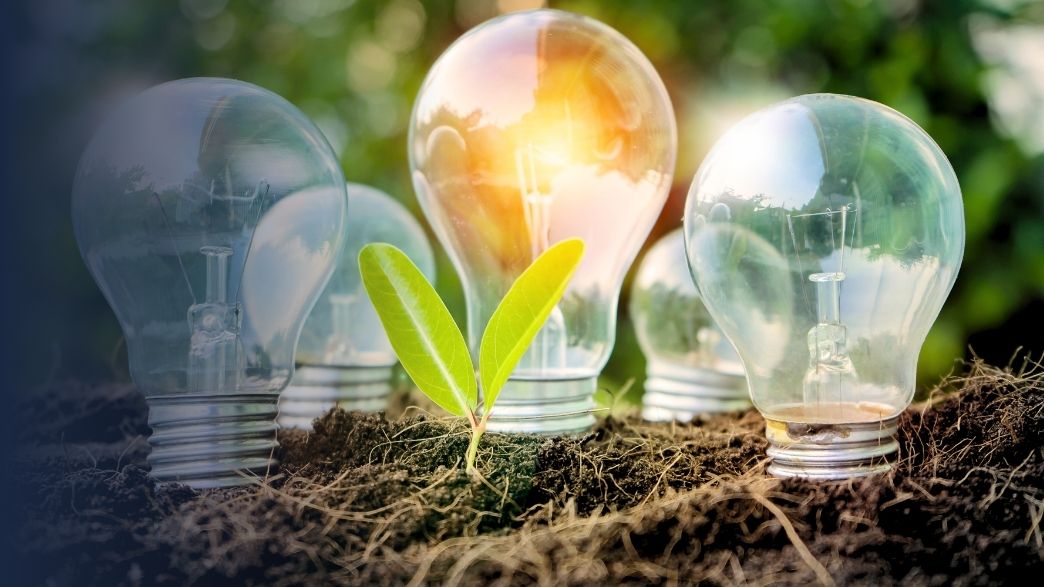Energy transition is one of the most pressing discussions on the global agenda due to growing climate concerns. This process involves shifting from fossil fuel-based energy sources, such as oil, natural gas, and coal, to renewable sources, including solar, wind, hydropower, and biomass, aiming for a cleaner and more sustainable energy matrix.
Development of Energy Sources in the Transition:
Solar and Wind Energy:
In addition to being clean and renewable technologies, solar and wind energy have experienced a significant decrease in implementation costs, making them more accessible for widespread adoption. Currently, global installed solar PV capacity has surpassed 1.2 terawatts (TW) by the end of 2023. This significant increase reflects the continued growth and expansion of adoption of solar technologies across the world, especially due to cost reductions and technological advances that make solar energy an increasingly viable and affordable option. Furthermore, wind energy, which uses the force of the wind to generate electricity, is one of the fastest growing sources in the world.
By 2023, global wind power capacity will reach approximately 1,210 gigawatts, highlighting the continued expansion and importance of appropriate policies and investments for a cleaner, more sustainable energy future. The wind energy sector has experienced accelerated growth, with a record installation of 117 gigawatts in 2023, and this upward trend in capacity is predicted to continue, with expectations of reaching at least 320 gigawatts annually by 2030 to meet the goals set in the COP28.
Hydropower:
Considered one of the most stable sources of renewable energy, hydropower uses water flow to generate electricity. In Brazil, for example, it accounts for about 60% of the energy matrix, demonstrating the country’s dependence on this clean and efficient technology. However, it is crucial to manage the environmental impacts associated with large dams, which can affect local ecosystems and riverine communities. Balancing energy development and environmental conservation is essential for a responsible energy transition.
Biomass and Geothermal:
Biomass, which includes organic materials such as wood and agricultural waste, is a renewable energy source that can be used sustainably without depleting natural resources. This technology is particularly promising in regions with abundant agricultural and forest resources. Geothermal energy, in turn, harnesses the heat stored beneath the Earth’s surface to generate electricity and heating. Countries like Iceland and New Zealand extensively utilize this technology, taking advantage of their abundant geothermal resources to meet a large portion of their energy needs sustainably and efficiently.
The energy transition is a global journey that involves not only replacing technologies but also reformulating economic and social policies to support the adoption of clean energies. This joint effort is vital to address climate change and promote sustainable development on a global scale. International initiatives, such as the Paris Agreement, are fundamental to coordinate these efforts and ensure that all countries contribute to a common goal.
The rapid advancement of energy storage technologies has the potential to revolutionize the energy market. Advanced battery systems allow storing energy generated by intermittent sources, such as solar and wind, improving the stability and reliability of electrical grids. Continuous innovation in this sector is crucial to overcome the challenges of the transition and ensure a constant and accessible energy supply.
Brazilian legislation plays a key role in promoting the energy transition. Laws like the National Policy on Climate Change (PNMC) and the New Legal Framework for Sanitation are examples of how Brazil is positioning itself to utilize its natural riches sustainably and responsibly. These policies not only promote the use of renewable energies but also aim at environmental protection and social inclusion as part of the country’s economic development.
Reducing CO2 emissions is one of the central pillars of the energy transition. Global efforts to decrease dependence on fossil fuels aim to significantly reduce greenhouse gas emissions, responsible for global warming and climate changes.
Reducing CO2 and other greenhouse gas emissions is crucial to limiting global warming. With the growing adoption of renewable energies, such as solar and wind, we are moving towards a scenario of reduced dependence on fossil fuels. Furthermore, innovations in carbon capture and storage technologies are becoming vital, enabling heavy industries and energy facilities to reduce their emissions. These strategies are essential to achieve the goals set in international treaties, such as the Paris Agreement, which aims to keep the global temperature rise below 2°C compared to pre-industrial levels.
Implementing decarbonization practices not only benefits the environment but also offers economic advantages. Companies that adopt clean technologies often benefit from tax incentives, government subsidies, and a better corporate image, which can attract investors and environmentally conscious consumers. Moreover, the development of new clean energy markets is creating job opportunities, driving economic growth, and promoting national energy security.
Therefore, transitioning to a low-carbon economy is not only an environmental responsibility but a strategic opportunity to ensure sustainability and economic resilience in the long term.

Comment